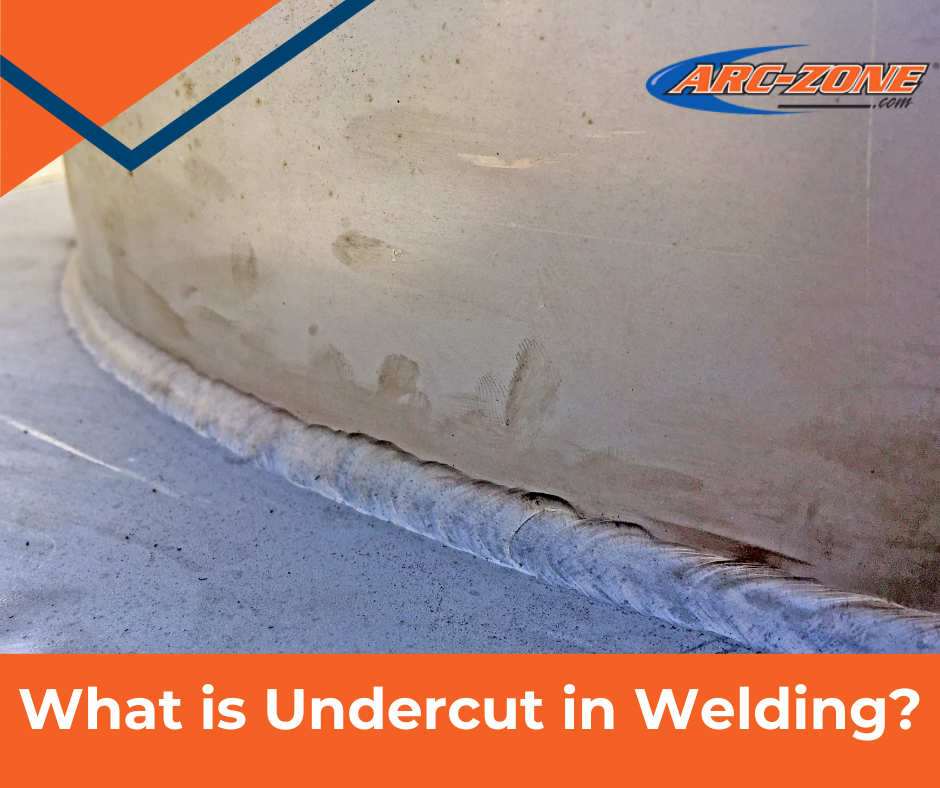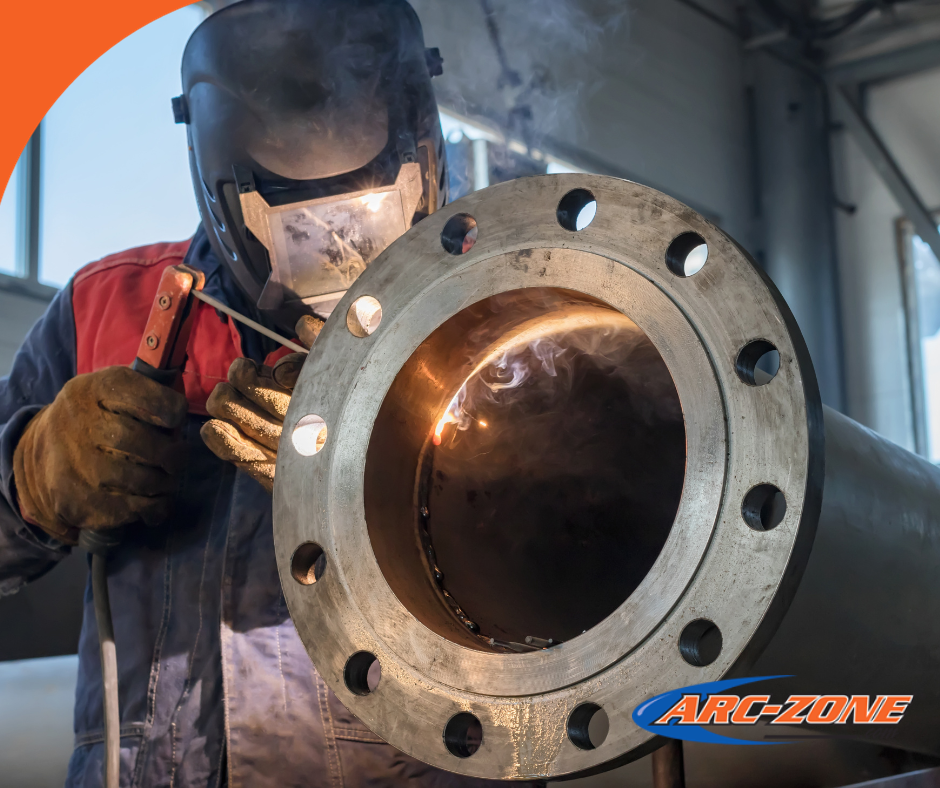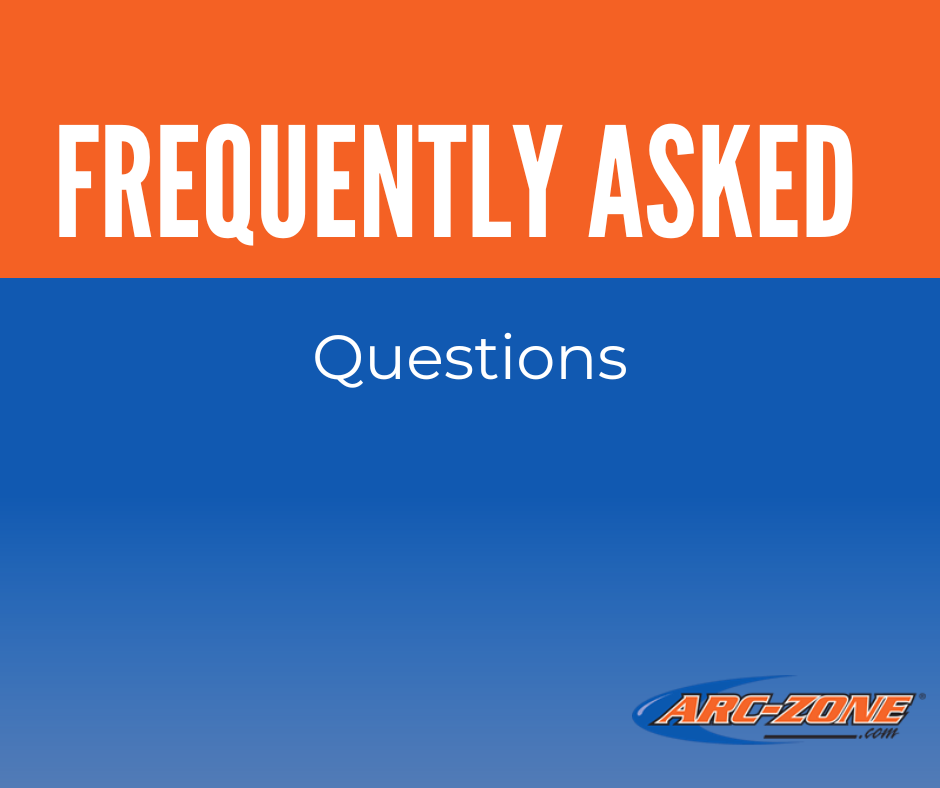Posted by Jim Watson on Nov 21st 2023

You know how frustrating it is to find an undercut in your work, but what exactly is undercutting in the welding process, and how does it happen?
A common occurrence even among professionals, an undercut can lead to diminished joint strength and unsafe structures. Welding requires precision and care to achieve the desired results, and undercutting is one of the most recurrent defects in welding.
In this post, I'll provide a complete overview of what undercutting is, the different types, causes and prevention, and the difference between undercut and underfill, rounding out your welding knowledge with some helpful tips on how to avoid excessive undercut in the weld area.
What Is Undercut in Welding?
Breaking it down, undercut refers to a groove or indentation that forms directly at the edges of the weld joint.
Undercut occurs when the weld filler metal fails to completely fill the joint and leaves a recessed area, weakening the weld joint and leading to structural instability in the form of cracking, corrosion, or complete failure.
Understanding what causes an undercut is crucial for ensuring strong, durable welds, and proper control of welding parameters and techniques.
Using the right equipment is required to avoid it from happening again and again.
TIP: If you’re having trouble finding the right gear or have questions about your equipment, contact the pro's at Arc-Zone for answers.
What Are the Five Causes of Undercutting in Welding?
The five causes of undercutting include the following:
- Poor technique.
- Incorrect voltage or current settings.
- Excessive travel speed.
- Insufficient shielding gas coverage.
- Inadequate cleaning of the workpiece.
Understanding these causes is crucial for preventing undercutting and ensuring the strength of the weld.
1. Poor Welding Technique
One of the main causes of undercutting is inconsistent welding techniques, which include improper heat input or excessive arc length.
2. Poor Penetration or Excessive Heat
Another factor is the incorrect selection of electrodes or filler metals, leading to poor penetration or excessive heat input.
3. Dirty Surfaces
Working on dirty or contaminated surfaces can also cause impurities in the weld, resulting in, you guessed it, undercut.
4. Poor Joint Preparation
Poor joint preparation, such as uneven or incomplete welds, is another cause.
5. Excessive Travel Speed
Additionally, excessive travel speed during welding can lead to an inadequate fill of the weld joint.

How Do You Prevent Welding Undercut?
To prevent undercut, it’s important to understand the factors that cause it, such as incorrect angles, the wrong welding speed, or a high heat input.
Here are some ways you can prevent welding undercut:
1. Use the Right Technique
By using the correct technique for the specific type of weld being performed, you can minimize the risk of it occurring.
2. Make Sure You Have the Proper Equipment
Choosing the right welding equipment and materials, including the appropriate shielding gas for gas metal arc welding (GMAW) or the proper electrode for shielded metal arc welding (SMAW), is crucial in preventing this from happening.
3. Maintain a Consistent Speed and Angle
Maintaining a consistent speed and angle while welding remedies overheating and subsequent undercut, improving the quality of the weld.
4. Inspect for Undercut
After completing the weld, it's important to inspect it for any signs of undercut and make necessary adjustments for future projects.
By following these preventive measures, you can ensure high-quality welds with minimal undercut.
What Are the Different Types of Undercut?
Depending on the location of the defect, undercuts are divided into two distinct types:
- External
- Internal
What Is an External Undercut?
The undercut that appears during a weld is called an external undercut.
As the area is closer to the weld gun, it shows up on the outside surface. Sometimes it’s also called a toe undercut due to its formation at the joint toe.
What Is an Internal Undercut?
An internal undercut appears when the weld metal isn't deep enough within the joint to completely cover the backside.
There, it creates a concave surface due to poor technique, poor joint fit-ups, or insufficient wire diameter.
What’s the Difference Between Undercut and Underfill?
Undercut and underfill are two distinct issues:
- An undercut is a common welding defect that refers to the groove or depression along the edge of the weld, which can weaken the weld and lead to cracks.
- Underfill occurs when there’s insufficient weld material, causing incomplete fusion and reduced strength.
Both should be avoided for a strong and durable end product.
What Is the Allowable Undercut in Welding?
The allowable undercut in welding refers to the maximum depth or width of the groove that is acceptable according to industry standards.
It’s important to adhere to these allowances as excessive undercutting can weaken the weld joint and compromise its integrity.
Acceptable undercut varies based on the welding code.
Generally, the undercut should not exceed 10% of the base metal thickness and be no deeper than 0.5mm.
Tips to Avoid Excessive Undercut
- Make sure the correct voltage is being used.
- Don't use an incorrect angle—not too far up or down.
- Have a consistent travel speed.
- The distance from the work material should remain consistent.
- Don't get too close with the arc or it might extinguish!
- Make sure your field of view is good so you can always see the puddle.
- Prep the base material properly and get the surface of the weld as clean as possible. Clean material equals a clean weld!
- Check the condition of consumables.
Frequently Asked Questions

What’s the Difference Between Lack of Fusion and Undercut?
When a weld fails to fuse on one side of the root, incomplete root fusion occurs. It's a deficit of penetration that happens when both sides of the root don't fuse to the weld. Undercutting is the groove that shows up in the base metal close to the weld root.
Is Undercut in Any Way Beneficial?
An undercut is not beneficial in welding and occurs when the weld goes too deep into the base material, forming a groove or a depression. This weakens the joint and makes it more prone to cracking or failing, causing an undercut welding defect and ruining the weld quality. Proper technique and the right equipment can help prevent undercut.
Can an Undercut Affect the Strength and Durability of a Weld?
Yes, an undercut can impact not only the appearance of the weld but also its strength and durability. An undercut forms due to improper welding techniques, weakening the weld and reducing its load-carrying capacity. Addressing undercuts during visual inspection and repairing them is crucial for maintaining a durable weld.
Conclusion
Undercutting in welding occurs when the base metal next to the weld joint is melted away and not properly fused with the filler metal. This leads to a groove or depression in the weld bead.
Undercutting can be caused by various factors, including improper welding techniques, incorrect parameters, inadequate shielding gas coverage, excessive travel speed, and incorrect electrode angles.
By understanding the causes of undercutting and implementing proper welding practices, you can achieve high-quality welds with minimal defects and ensure the integrity of your projects.
Remember to always follow industry best practices if you need more information contact the welding professionals at Arc-Zone.
Call Us: (760) 931-1500 or Email Us: sales@arc-zone.com
